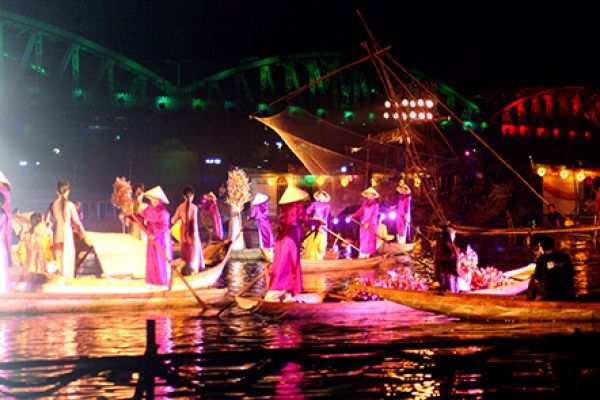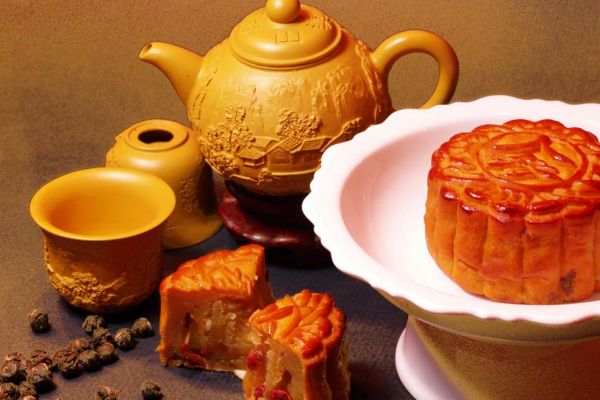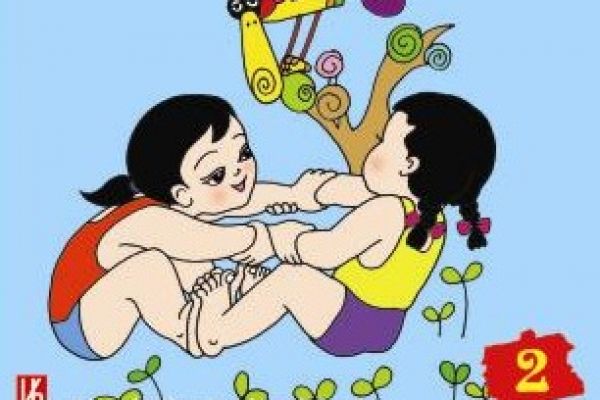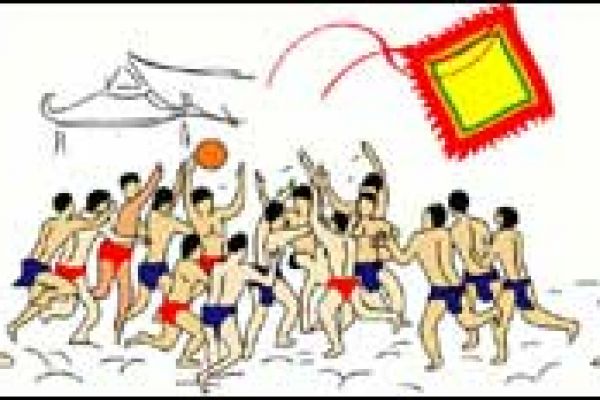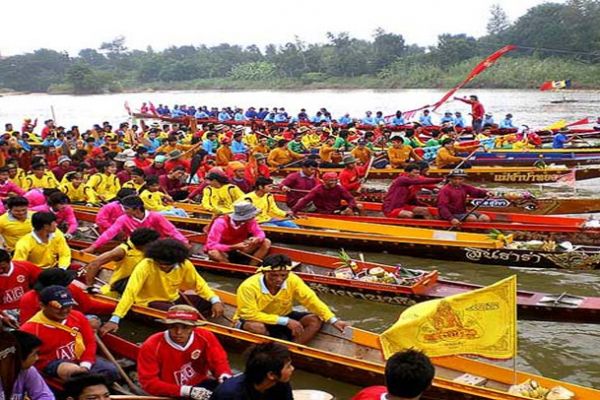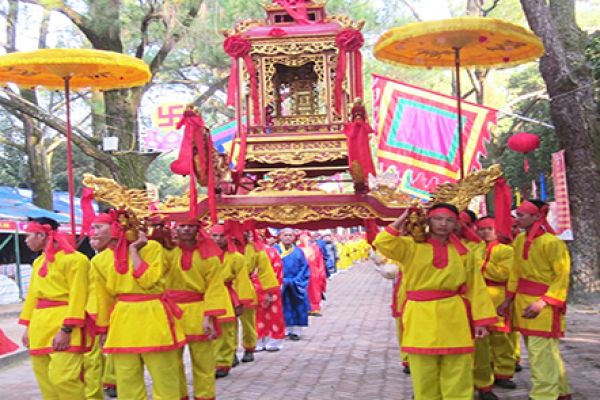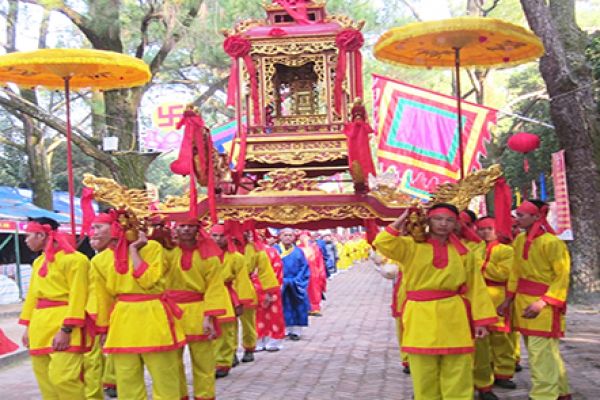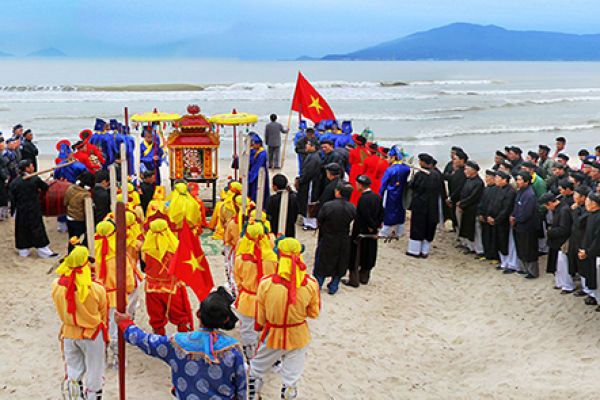On this day, at a selected hour no matter it is in the morning or afternoon, people take a bath and put on their best clothes in anticipation of the New Year. They take incense, lamps, flowers and fruits to a pagoda where they do the great calendar-receiving ceremony. At the pagoda, Moha Sang-Kran, put on a red-lacquered, gilded tray, is placed on a palanquin and carried three times round the main sanctuary. This rite is to welcome the New Year and wait for omens for a bad or good new year. Then the official ceremony is carried out inside the sanctuary. After that, every participant prays to the Buddha and chant prayers for a happy new year. Young males and females walk out to the pagoda yard and join in fun activities until late at night.
The second day is for the ceremony to offer boiled rice and heap up a sandy mountain. On this day, every Khmer family cooks rice and offers it to Buddhist monks at the pagoda in early morning and at noon. The monks chant prayers to thank those who make the food and bring it to their pagoda and say good luck to them.
On the afternoon the same day, people start to heap up a sandy mountain in search of happiness and luck. They make small mountains looking to eight directions and one in the middle which represent the universe. This custom originates from an age-old legend. It displays people’s aspirations for rain.
The third day is for the ceremony to wash the Buddha’s statue and Buddhist monks. After giving boiled rice to the monks in the morning, they continue to listen to Buddhist teachings. In the afternoon, they burn incense, offer sacrifices and use scented water to wash the statue in order to pay tribute and gratitude to the Buddha. This is also to get rid of the old year’s misfortunes and wish all the best for the New Year. The monks do a ceremony to pray for peace in the death’s souls. After that, the people return to their house and wash the Buddha’s statue at home. They offer dishes, confectionery and fruits to ask for happiness for their parents and grandparents and being forgiven for their mistakes made in the old year.
During these three days, Khmer people go to visit each other and wish good health, good luck and prosperity to each other. They also join in fun activities.
Chol Chnam Thmay festival shows Khmer people’s aspirations, like many others ethnic groups, to forget about the old year’s misfortunes and look for a better new year.
Each year, there is a market session on lunar March 27 (often falling on solar May), but it is not a farming produce trading market but a love market. The name and activities of the market have common things with love market in Sapa.
But what’s different is that Khau Vai is a love market for various ethnic minority groups from four mountainous districts in Dong Van Plateau and ethnic minority groups in communes adjacent to Bao Lam and Bao Loc districts of Cao Bang province.
Local senior people said that this love market dated back to 1919. Roads are now more accessible than the previous years, so more people come to the market. However, activities of the market are still rich in cultural identity.
A local myth tells the story of a young couple from different tribes who fell in love with each other. The girls belonged to the Giay group and the boy belonged to the Nung group. The girl was so beautiful that her tribe did not want to let her get married with a man from another tribe. Consequently, violent conflict arose between the two tribes.
One day, the boy witnessed an aggressive fight between the tribes as a result of their love. To stop the blood shed, the lovers sorrowfully decided to say goodbye. However, they made plans to meet once a year on that day, lunar March 27.
The place where they used to meet is Khau Vai, which thereafter became a meeting place for all of those in love.
In the market area, there are two temples called Ong and Ba (Mr and Mrs). A story tells that, once upon a time, there was a boy and a girl born in two different places of the Dong Van Plateau. The boy’s surname is Linh and the girl’s surname is Loc. They love each other very much despite being hindered by deep streams and high rock mountains.
Because their families prevented their marriage, they together came to Khau Vai, a prosperous land with rich plants which they could live on.
Although they did not have a child but they lived happily until they died. In honor of their merits in cultivating the wild land into a rich land, the local people built the two temples to worship them.
Therefore, on every lunar March 27, Khau Vai attracts couples of different ages, including those who seek their partners for the first time. However, most of them are those who love each other very much but cannot wed together because of many different reasons.
On the day when the market session takes place, it is likely that both the wife and her husband together go to the market but they look for their own partners to share emotions. If one of them has to stay at home, he or she is not jealous in love because the dating at the marketplace is really a faithful feeling exchange.
It can be said that the beauty of love is a basic factor to keep the existence of Khau Vai love market for such a long time.
With the assistance of Ha Giang Culture and Information Department, Meo Vac district and Khau Vai commune authorities hold the traditional love market of Khau Vai in order to promote cultural identity of ethnic minority groups in the locality.
The love market festival is held on lunar March 26 and 27 with the participation of a large number of locals. The festival features food and drink culture, song performances and folk games. Ethnic costumes, jewellery, ethnic musical instruments and culture and art publications are on display at the market, reflecting activities of the local people.

